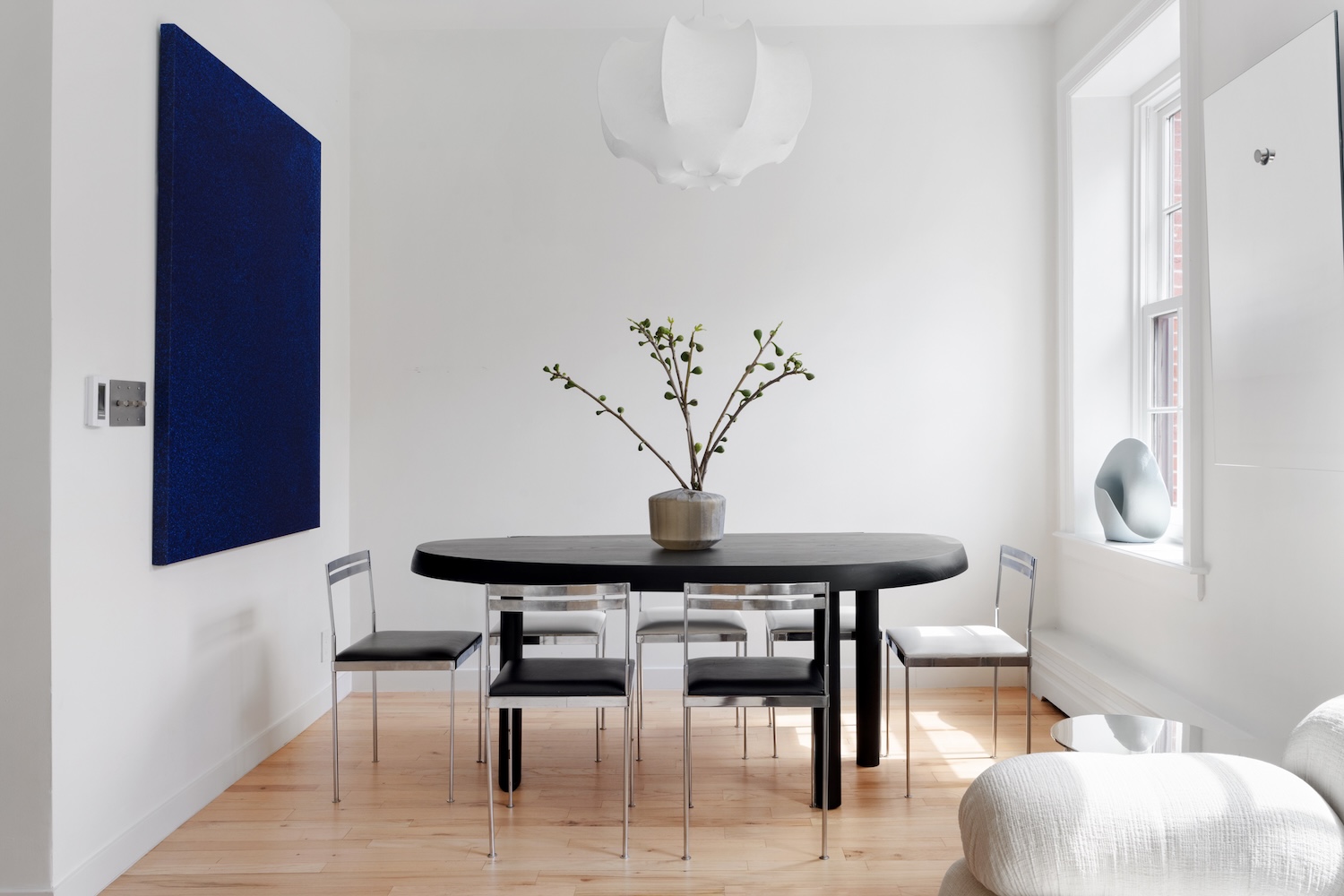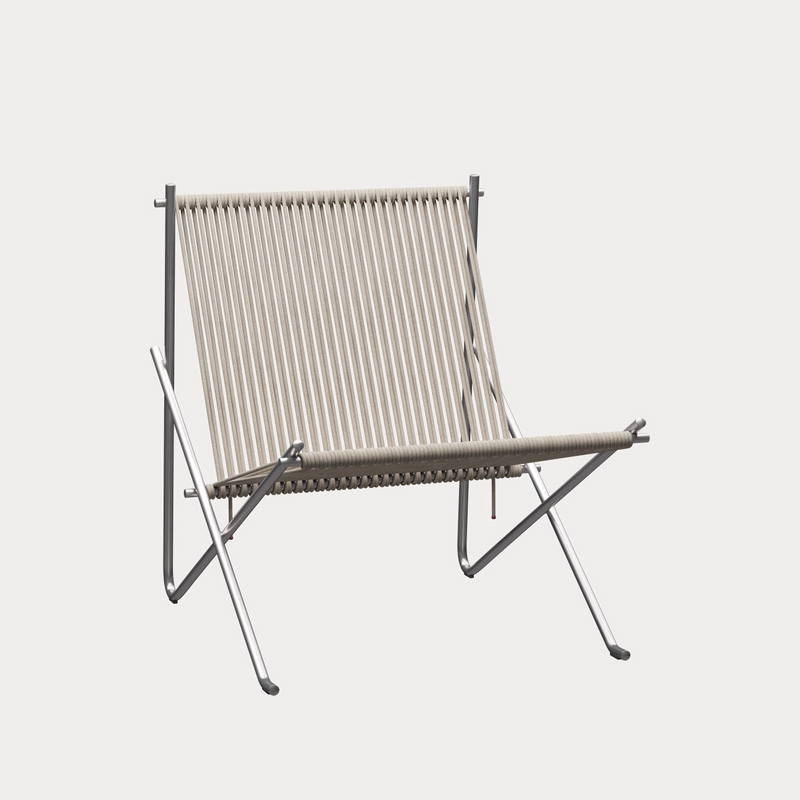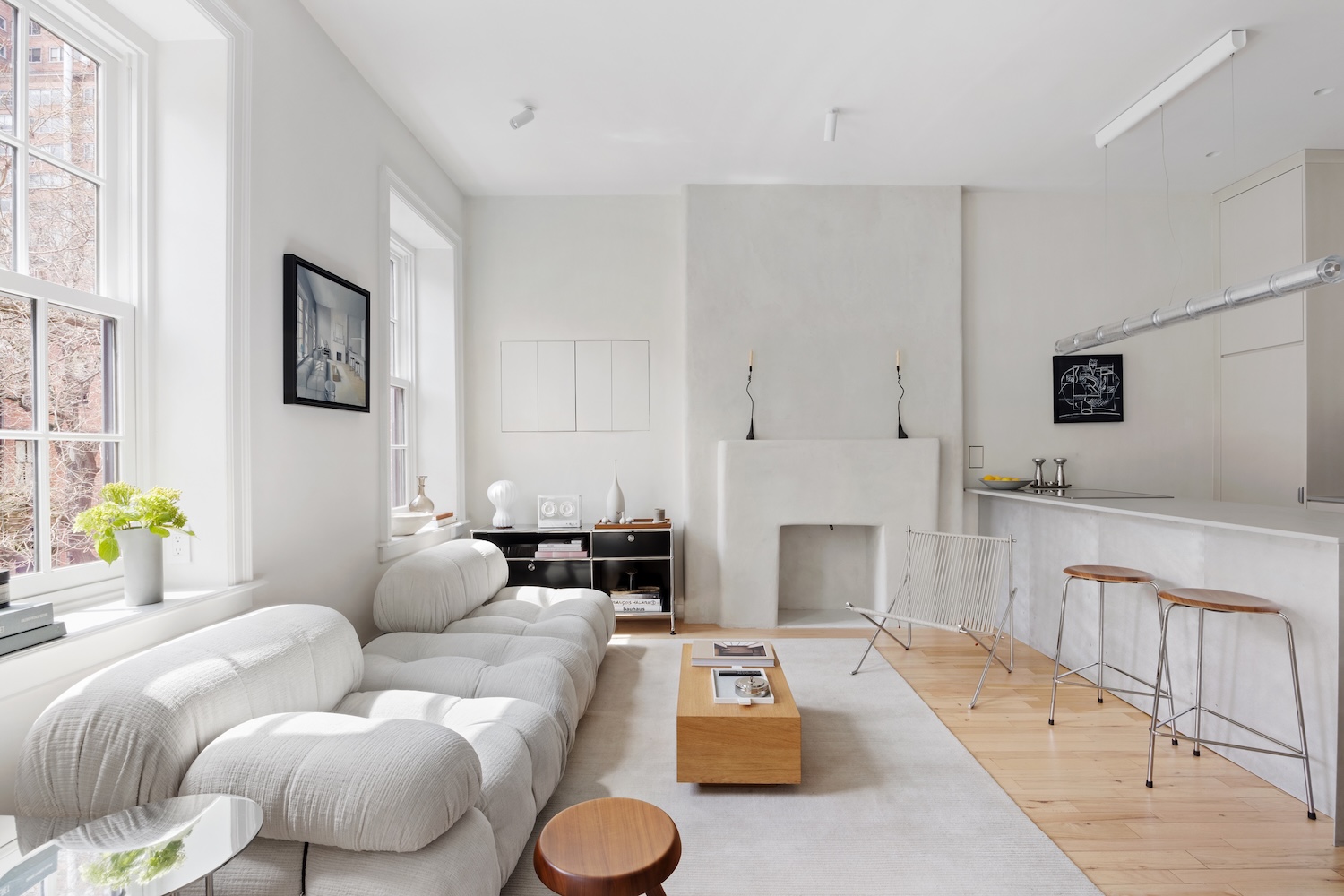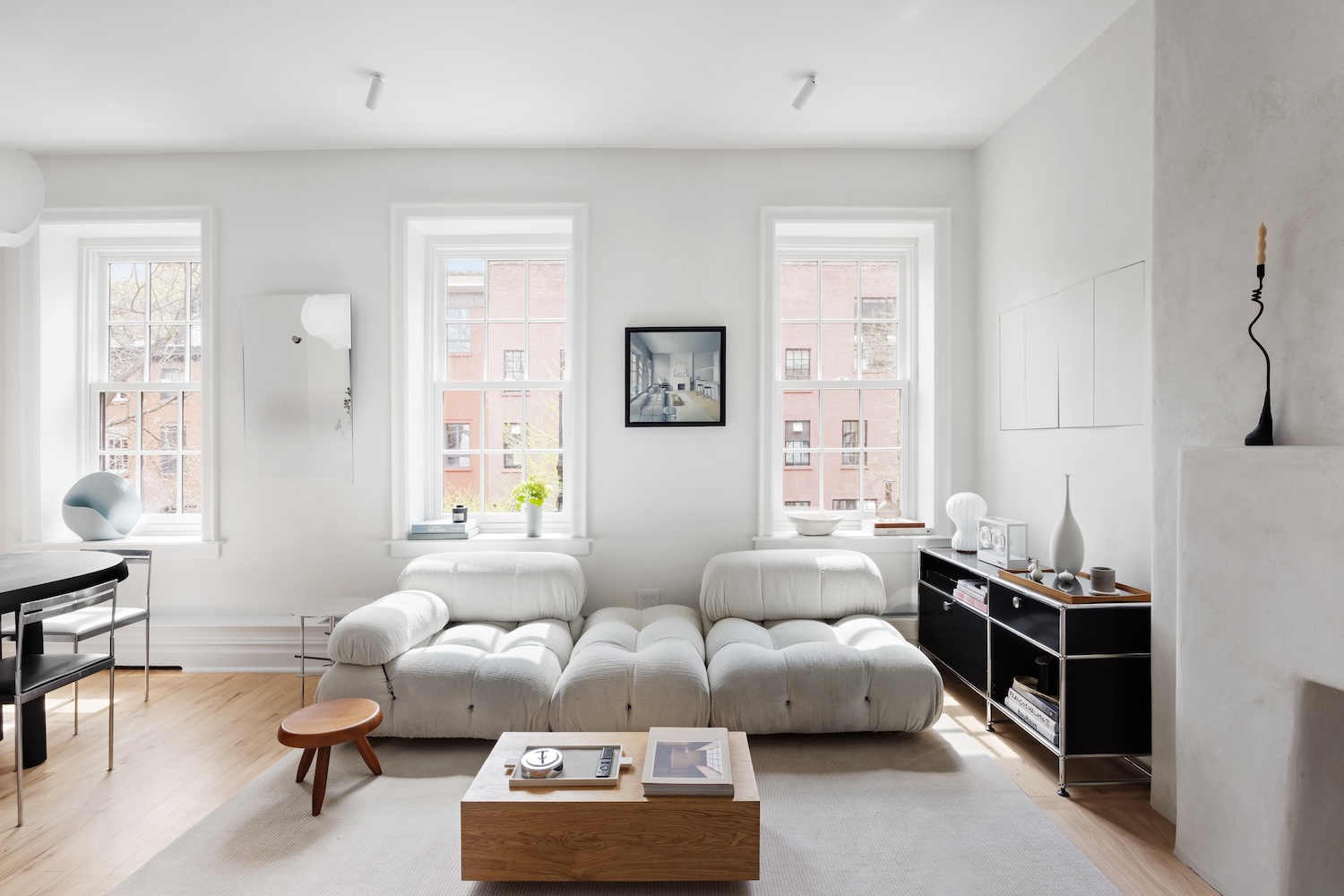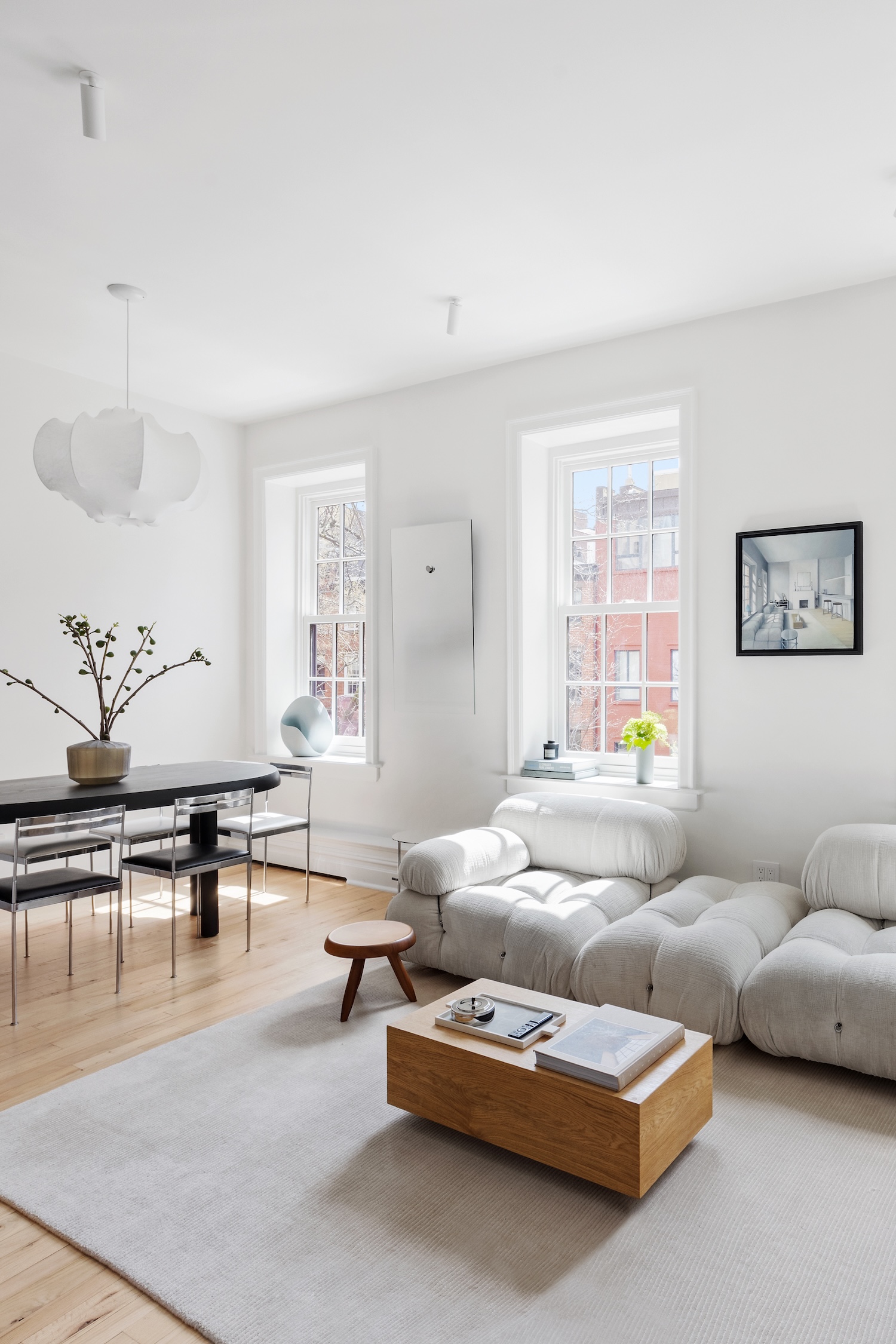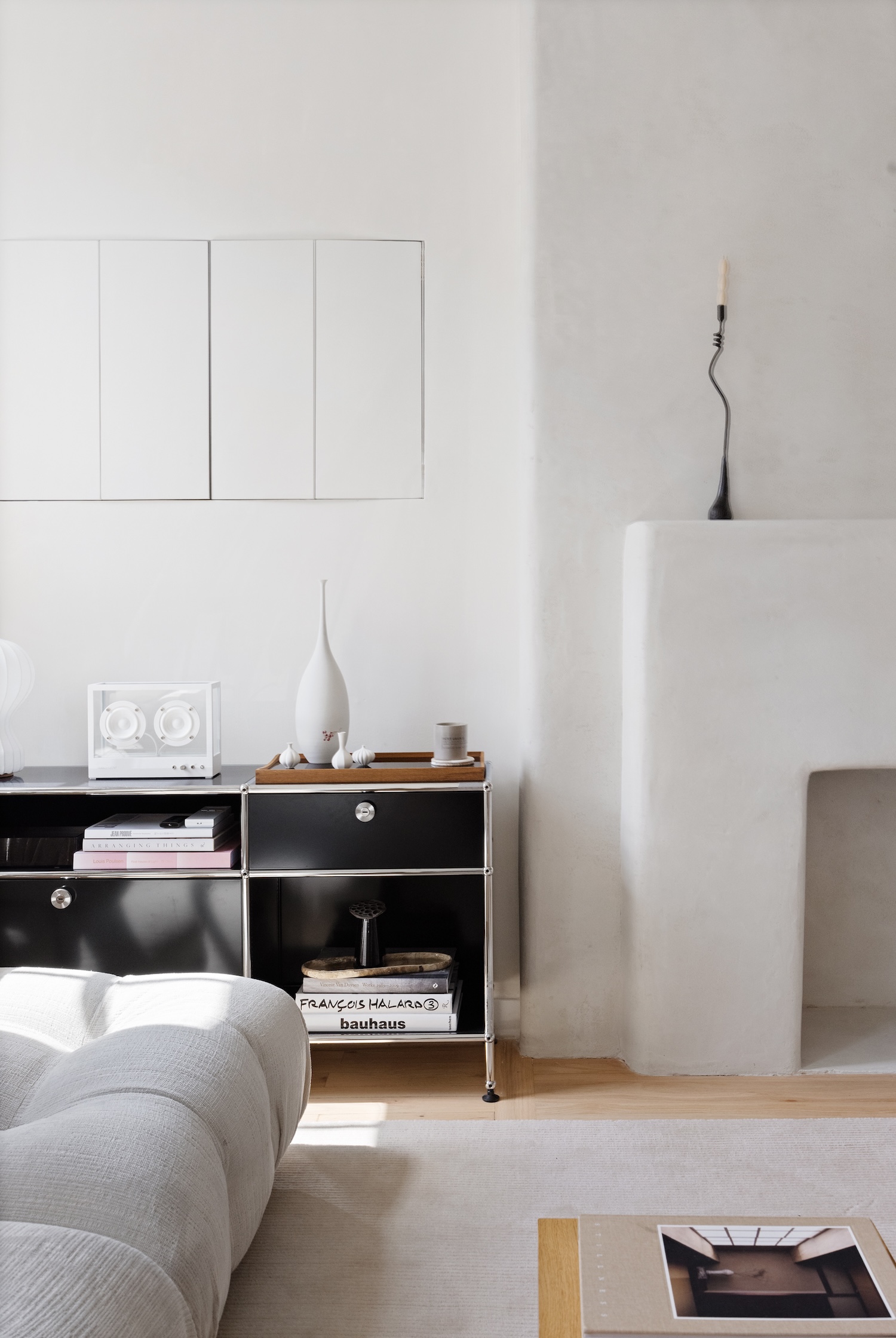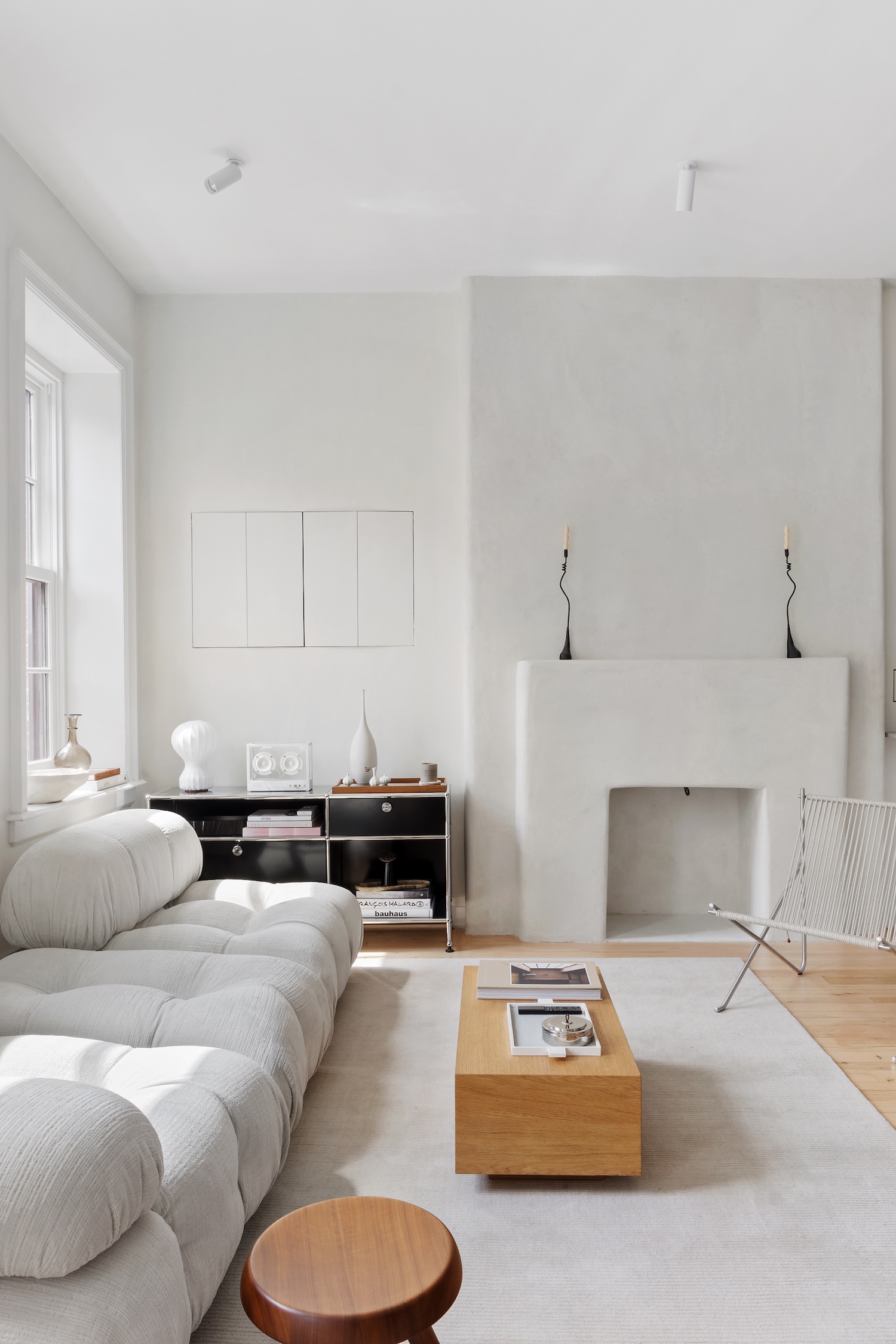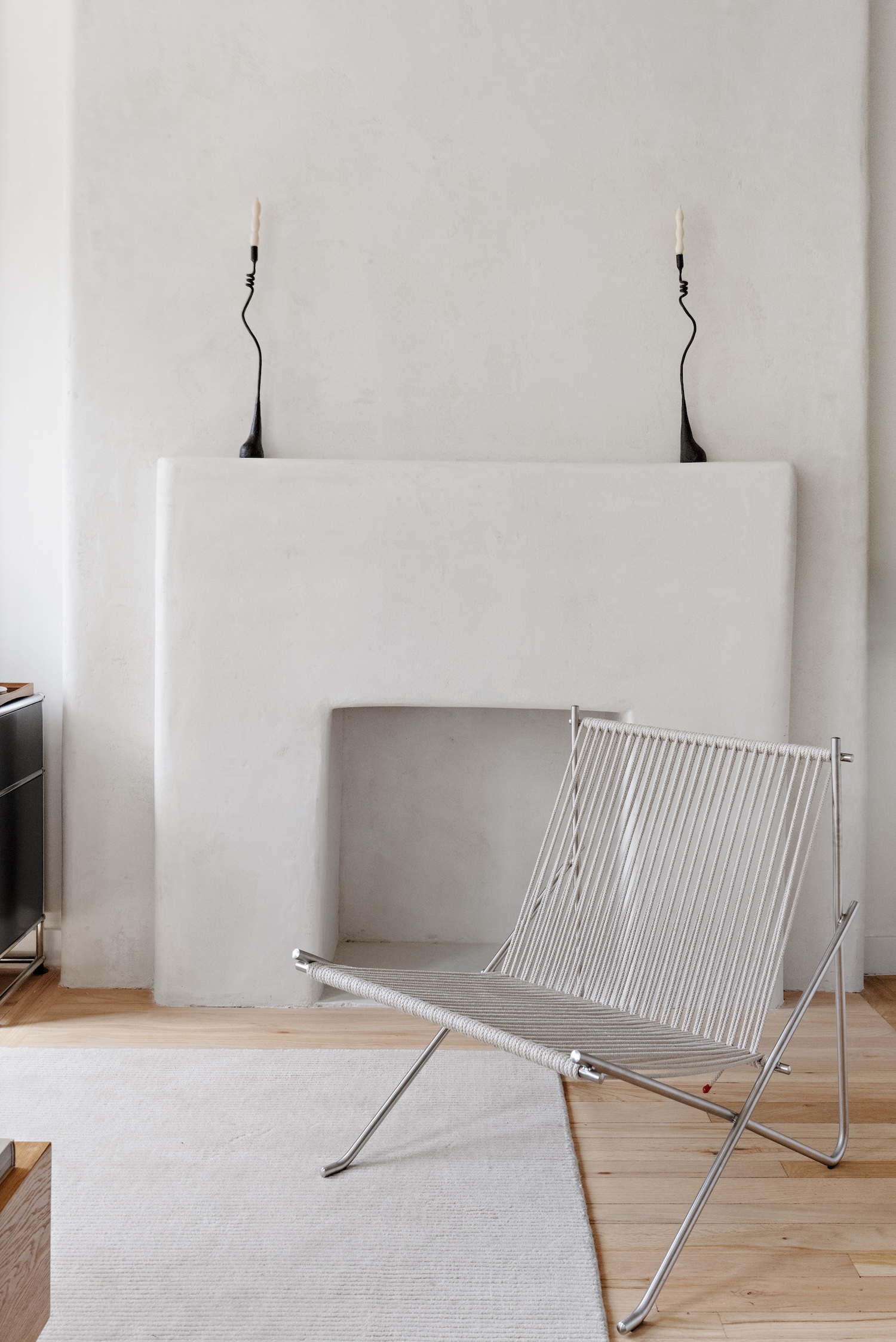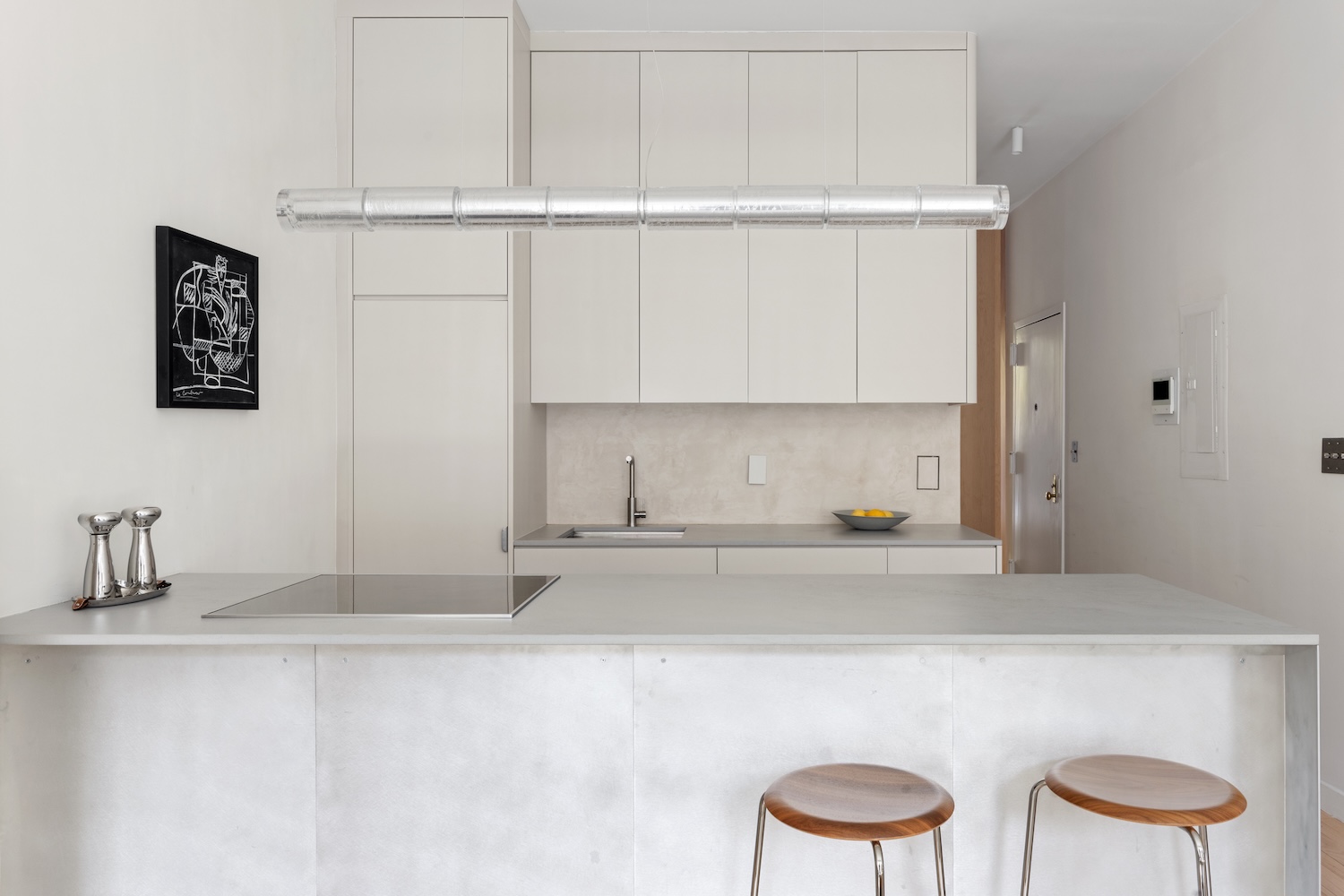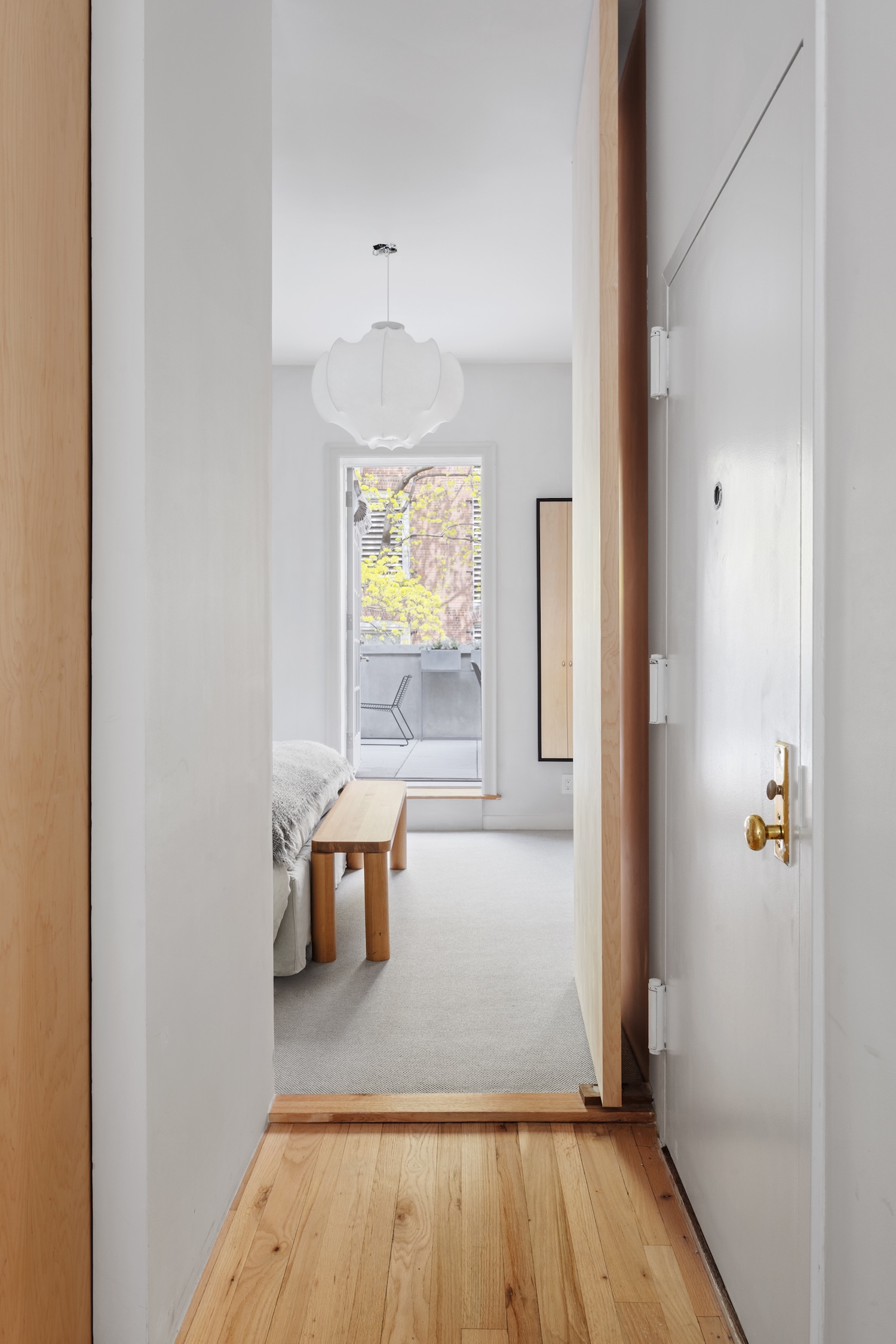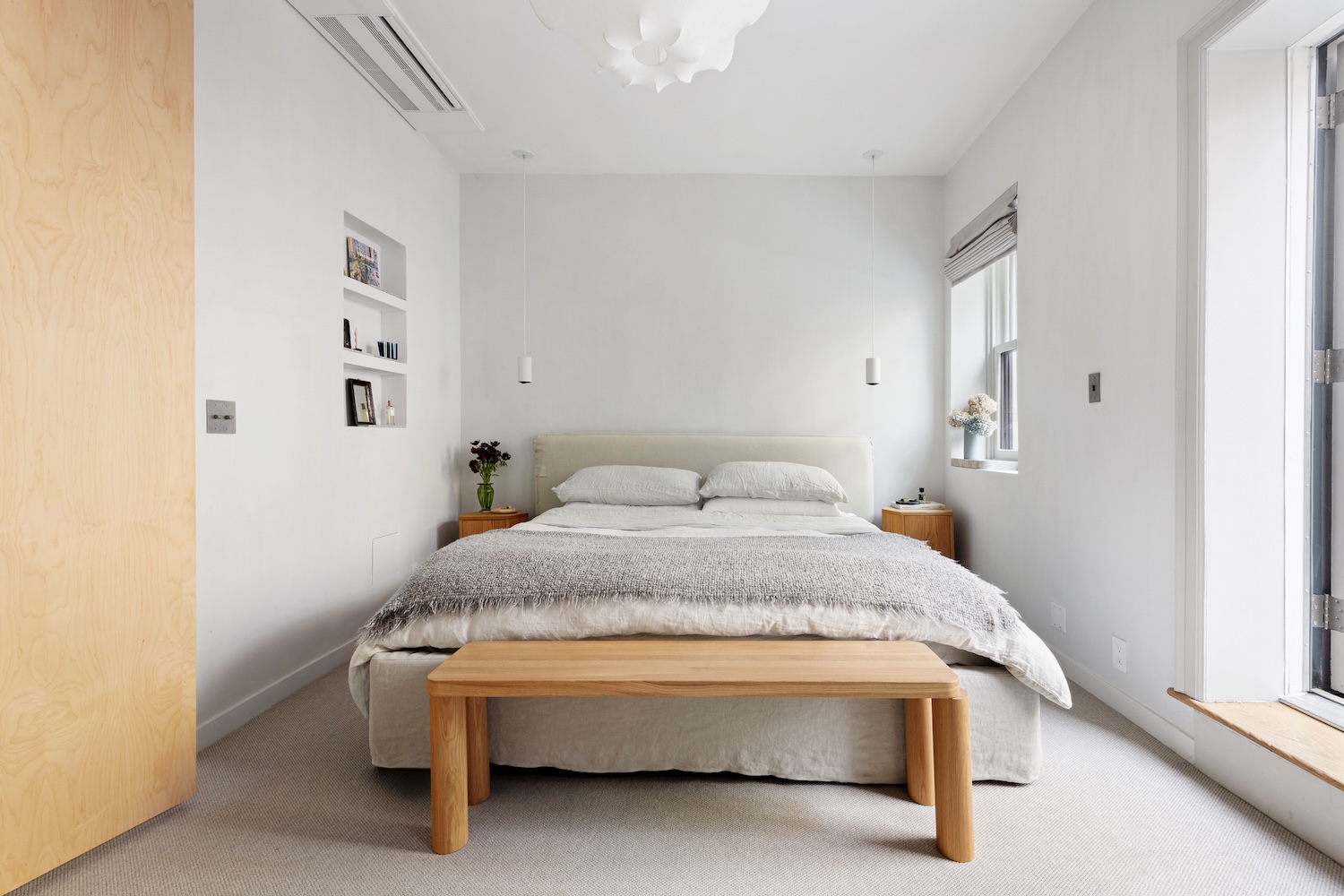West 13th Street is a minimalist apartment located in the West Village, New York, designed by Studio Gillett in collaboration with Wiskup Architecture. The project begins with an act of architectural archaeology. Those 13-foot ceilings and original plaster moldings are not merely preserved but activated as compositional elements, their historic proportions establishing a dialogue with carefully chosen modern interventions. The designers understand that working within a 1860s brownstone demands not submission to the past, but a sophisticated negotiation with it.
Material choices reveal this philosophy in practice. The Belgian plaster wraps surfaces with what one might call tactile quietude – its matte finish absorbing rather than reflecting, creating walls that seem to breathe. Custom maple millwork introduces warmth without ostentation, each grain pattern carefully considered within the broader tonal symphony of sand, stone, and fog. These are not materials chosen for dramatic effect but for their ability to create what the Japanese call ma – meaningful emptiness that allows other elements to resonate.
The attention to detail extends to the most intimate scale. Cabinet hardware throughout employs pieces from Spaces Within, whose understated forms demonstrate how even the smallest touch points can reinforce a project’s larger ambitions. Each pull and knob becomes part of the haptic vocabulary, creating consistency across the domestic landscape while maintaining the material honesty that defines the overall approach.
The furniture selection demonstrates a curator’s eye for material integrity. The B&B Italia sofa creates what Studio Gillett describes as “a low, architectural gesture,” its form echoing the restraint found in Scandinavian modernism while the chrome accents nod to mid-century lineage. The Charlotte Perriand dining table anchors the eating space with characteristic directness, flanked by vintage French chairs from the 1920s that speak to an era when craftsmanship and daily use were inseparable concepts.
This approach to mixing periods reflects a sophisticated understanding of design history as living tradition rather than museum piece. The Fritz Hansen modernist classics converse easily with their 1920s French counterparts because both emerge from similar principles: honest materials, functional clarity, and respect for the user’s daily rituals.
Artworks by Chandler McLellan punctuate the neutral palette with moments of visual poetry, their presence carefully calibrated to enhance rather than compete with the architectural framework. Meanwhile, decorative objects sourced from Eimi contribute layers of textural interest – each piece selected not for dramatic effect but for its ability to contribute to the space’s overall sense of considered calm.
The Reform stainless steel island in the open kitchen introduces utilitarian precision – a nod to professional cooking culture that has increasingly informed residential design. Hand-finished brass hardware by Studio Henry Wilson provides moments of tactile contrast, each piece carefully weighed in the hand before installation. These details matter because they accumulate into atmosphere, creating what craftspeople call “hand presence” even in manufactured objects.
